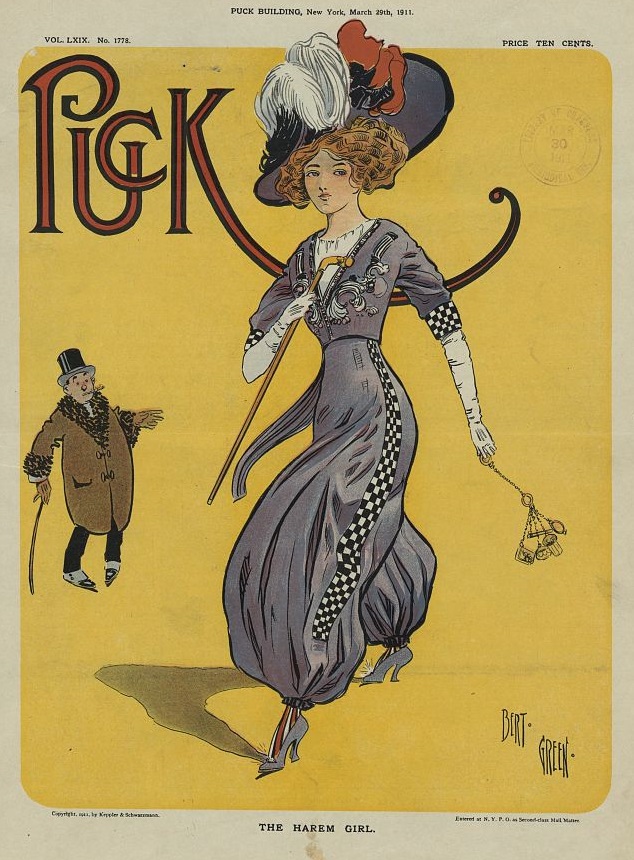From Persia to Paris
Long before becoming this icon of 80s and 90s pop culture, harem pants played a much bigger societal role: they became a symbol of women’s liberation. Harem trousers were a traditional garment in the Persian Empire some two hundred years ago. Originally a garment for men called a dhoti, it consisted of a single piece of cloth of four and a half meters in length. The cloth was then tied around the ankles and knotted at the waist to form the trousers’ characteristic shape.
Iranian women also wore a similar loose-fitting garment, known as salvars or shalwar. Whilst being trousers, and thus typically seen as a male garment, they were widely worn by women and still remained modest due to the draped effect of the loose cloth.(Fig. 4)
The harem trousers similar to the ones we know today were first introduced into Western culture by the Paris couturier, Paul Poiret. In 1911 he designed a clothing range which incorporated harem trousers, in an attempt to ‘liberate’ highly strict Western female fashion. His harem trousers or jupe-culotte as they were also called, exploited links to their Persian origins and were part of a greater Orientalist narrative (Fig. 5, 6). This fashion development was met with fierce criticism by contemporary designers and has since been regarded as direct cultural appropriation by many. Cultural appropriation itself usually has negative connotations, and due to the lack of ownership and agency of the Persians, as well as the ignorance of the origins of the harem trousers, these criticisms would be justified.
Despite their baggy fit and the then-attractive oriental undertones, these harem trousers were still highly controversial at the time, and the trend did not take off!
](https://micrio.thingsthattalk.net/YPYTU/views/max/128x128.jpg)
](https://micrio.thingsthattalk.net/chbAv/views/max/128x128.jpg)
](https://micrio.thingsthattalk.net/NIZkz/views/max/128x128.jpg)